.jpg)
The sensation of a foreign body on the skin of the foot, pain and burning can indicate the presence of a spinal cord in a person. A spike on the leg is nothing more than a wart. Most of the time, a plantar wart appears on the parts of the foot that experience the most stress when walking. Much less often, this seal appears on the palms or fingers.
Externally, the spike on the leg is almost no different from the plantar wart. The seal can be slightly convex, which gives patients additional inconvenience in the form of pain, discomfort and problems when choosing shoes.
However, it is impossible to get rid of a thorn like a wart. Conventional cosmetic procedures in the form of sawing off the keratinized skin or cutting it will not have the desired effect. Getting rid of a plantar wart can be very difficult. Often, to solve this unpleasant problem, patients need to consult a doctor.
Despite the specificity of the disease, the spine can also be removed using alternative methods of therapy. The main thing is to choose the most effective and safest treatment option for your health and consult a doctor first.
What is a spike on the leg: symptoms, causes and signs
The spike has a viral nature. This name was given to education due to the sensations that a person experiences when walking. Typically, people experience stabbing sensations, similar to a thorn prick.
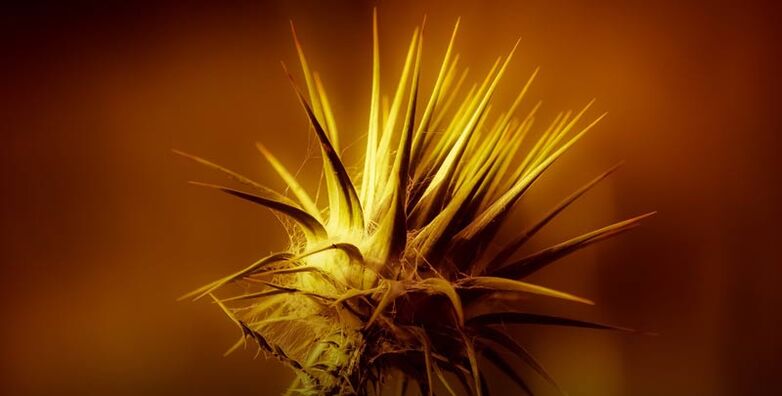
How is it formed?
The formation of a plantar wart begins with the appearance of a white lump on the sole of the foot, slightly protruding above the surface of the skin. Later, with development, the formation begins to resemble corns or keratinized corns.The size of the column usually reaches 1-1. 5 cm.
At the base of the spine are not the usual accumulations of horny cells, but threadlike growths. These growths are able to penetrate deep into the tissues. Thus, they affect the nerve fibers and cause pain in a person.
The spine can appear as a single formation or a large group of warts. With the appearance of numerous pimples, one, the largest "mother" pimple can be distinguished. All other "daughter" warts are much smaller and are located around it. Numerous plantar warts cause a lot of discomfort to a person and are very difficult to treat.

Causes
There is only one reason for the appearance of warts on the foot - it ishuman papilloma virus.
Important: There is an opinion that parasites in the intestines can become the cause of pimple. In fact, this is a medically unfounded misconception.
The infection scheme with a virus is quite simple. It is enough for a person to scratch their skin. After that, the virus enters the human body and penetrates the genes of skin cells. Then the cells deform and begin to resemble a tumor, turning into a wart.
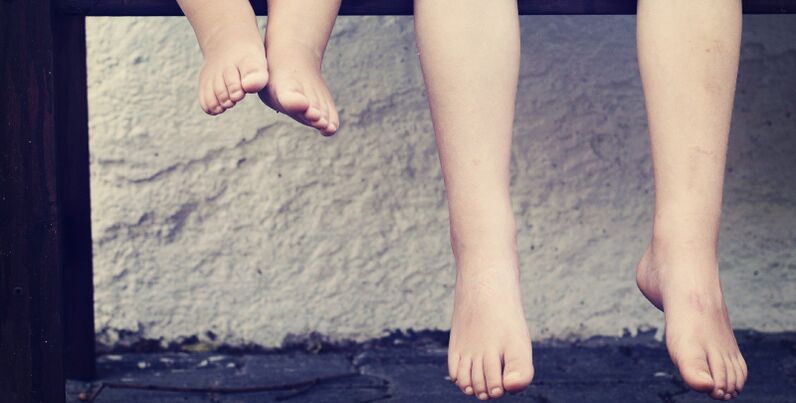
Most often, the infection occurs in childhood. Typically, children are infected with the virus in kindergartens, schools, beaches or public showers. Only children whose immunity is weakened get sick.
Appearing in childhood, the spine disappears in the period of growth. As an adult's immunity is stronger, warts appear very rarely.
The risks of transmitting the virus increase when the user's feet are injured. Scratches, blisters, cuts and abrasions are dangerous for people who are not infected with the virus. There are several factors that trigger the papilloma virus in the body:
- sweating of the soles;
- narrow, uncomfortable shoes;
- rubber, non-breathable shoes;
- stress.
Symptoms and signs of the disease
Spike is an extremely unpleasant disease. The sensations that a plantar wart causes will significantly impair a person's quality of life. This manifestation of the papillomavirus is one of the most difficult. The main symptom of a spinal cord is pain. It can accompany a person for the entire time until the wart is removed. The pain can be intense and is especially common when walking or running.
The spine can also hurt due to its tear. As there is a roll of tissue around the wart, its weakening often leads to intense, sharp pain and even bleeding. It is not safe to damage a wart. If this still happens, it is necessary to treat the wound with peroxide and seal it with a breathable adhesive plaster. Until the wound is completely healed, it is worth taking care of cleaning shoes and socks.
Another characteristic symptom of the spinal cord is discomfort when walking. This sensation is similar to pressure on tissues. Patients describe it as a thorn in their side. This is the first symptom of thorns. But the pain is linked later along with the development of the disease and the growth of the plantar wart.
Differences between spines and calluses
Distinguishing a thorn from a corn is very easy. You can do this after taking a hot bath or shower. The vaporized skin at the site of formation becomes "hairy". In the middle part of the wart there are one or more black spots. It is from these black dots that the filamentous process enters the skin. Unlike a corn, a wart is constantly growing.
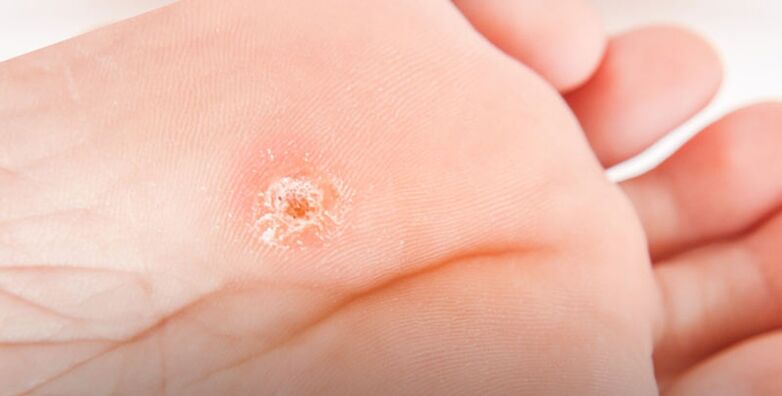
A corn is more uniform than a wart. Spike is heterogeneous, reminiscent of a cauliflower. There is a recess in the center and the entire surface structure is covered with small recesses.
Important: A pimple, like any wart, is a benign formation on the human body. The stakes of its rebirth are quite high. Tissue damage, stress and weakened immunity can trigger the spinal tissue malignancy process. Therefore, patients need to consult a doctor in a timely manner to combat the wart and its effective removal.
So the differences are:
- Corn has a uniform structure;
- Corn causes no pain;
- It can be easily removed with a file and softening procedures;
- The callus skin is very thick and convex, in the wart it is irregular, with depressions and villi.
How to remove a spike on the leg? therapy methods
There are several options on how to remove the peak. First of all, you should consult a doctor and get medical help. Doctors offer several instrumental methods to remove the spine.
electrocoagulation
This method is very simple and not very time consuming. Typically, patients only need one procedure, during which the doctor can remove several small warts at once. Typically, an electrocoagulation session only takes 1-1. 5 minutes. The time taken depends on the size of the warts and what their total number is. Local anesthesia is used to remove plantar warts.
Before the procedure, the doctor treats the skin with antiseptics. After that, the handle of the electrocoagulator is fitted around the spine, due to which the device thermally processes the tissues and leads to the death of the wart. The temperature at which tissues are cauterized is 800°C. This temperature cauterizes the blood vessels, which helps protect a person from bleeding. After the session, a crust forms on the skin, which falls off when the tissues are completely healed.
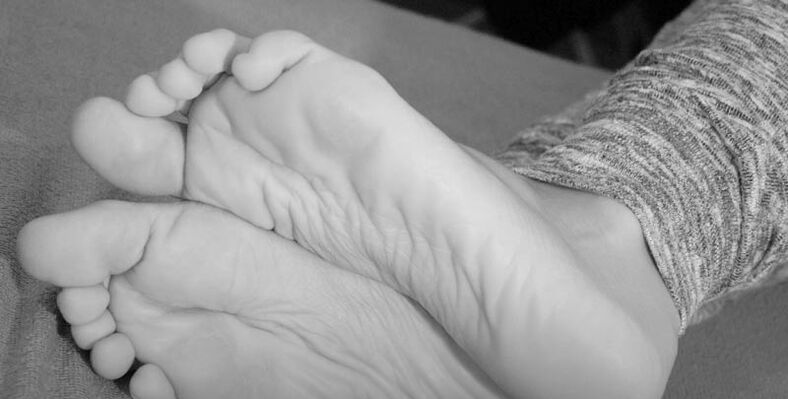
Laser wart removal
Before starting the procedure, patients must be examined. This allows you to understand the depth of the wart in the skin. In the absence of such an examination, removal may be ineffective. Doctors determine the depth of penetration into the tissues of the spinal antennae and proceed with the procedure. Before starting the procedure, the doctor injects an anesthetic injection under the wart. After the patient feels that the pain reliever has started to take effect, the doctor puts on the glasses and proceeds to the session.
While working with a laser, the doctor removes the pathological tissues in layers and at the same time cauterizes the vessels that supply the spine. Laser treatment is carried out until the root system of the wart is completely destroyed. After removing the spine with a laser, the patient is left with a small burn. This burn requires constant treatment with antiseptics. The wound itself needs to be covered with dry gauze and a bandage. The duration of the removal session depends on the number of spikes and their size.
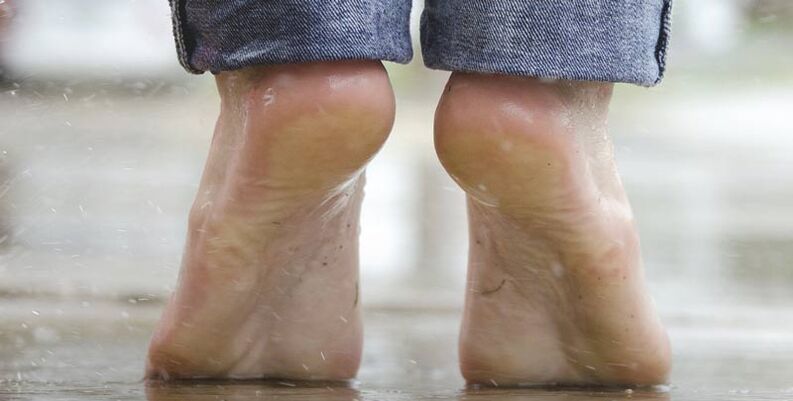
cryotherapy
This procedure involves removing the peak with liquid nitrogen. When removing the spines in this way, antispasmodics are almost never used, the procedure is painless. In some cases (large thorns, thin skin), pain relievers are still used. The procedure is carried out in two different ways - with a catheter or a cotton swab. The last option is used much more often.
The doctor cleans the skin with antiseptics, dips a cotton swab in liquid nitrogen and touches the tip with it. Exposure to a wart should last about 5-30 seconds. The exposure time depends on the size of the wart. A longer exposure to nitrogen is necessary if the patient has a large, deep spine. In this case, the nitrogen must penetrate all layers of the skin, all the way to the root of the wart, and therefore the nitrogen exposure can last from 25 to 35 seconds. After the freezing process, the skin acquires a pinkish-white hue, which indicates the death of skin cells.
In almost 100% of cases, a medium-sized blister appears in patients the day after the procedure. This skin reaction to low temperatures is quite normal and indicates the effectiveness of the session. A clear or reddish fluid may accumulate inside the bladder. You should not be afraid of this, as this process indicates that certain layers of the skin were affected during cryotherapy. The top of the blister is usually the pimple itself.
Spike in the leg: surgical treatment
If no method of removing the spine has helped to get rid of the disease, patients are advised to consult a doctor and surgically eliminate the formation. There are many advantages of the method:
- High probability of complete removal.
- Efficient in removing particularly deep thorns.
- Minimal chance of recurrence.
Local anesthesia is also used during the procedure. During the session, the doctor removes all pathological tissue and sutures the wound. However, the procedure also has disadvantages:
- Scars remain after the session.
- Healing time is longer.
- Deep incisions can hurt even a few days after surgery.
The choice of method by which the column will be removed depends on the effect of previous methods of fighting. In addition, the physician relies on the diagnostic results and general history.
How to deal with thorn: medicines
Medications help to remove the thorns on the soles of the feet very well. Today in the pharmacy you can find a variety of drugs with necrotizing properties, which allows you to quickly and effectively get rid of the problem.
If you suffer from the manifestations of thorns and do not know how to remove them, you should pay attention to the reviews of these funds:
- Cauterizing solution, which has two main active substances in its composition - meta-cresol and phenol. These components have a toxic property, which makes it possible to irrevocably destroy the cells of the ear. It should be borne in mind that the drug can affect the human nervous system. Thus, the drug should be used only in accordance with the instructions.
- A folk remedy for thorns, which is affordable and effective. In its composition, it has soft drinks that allow the substance to be used to treat people of practically all age groups.
- A special and convenient medical pencil, able to get rid of thorns in the shortest possible time. The peculiarity of the product is that it contains silver nitrate. It is he who has a bactericidal effect on the affected tissues.
- A budget tool with an aggressive and flaming property. Sold in pharmacies in the form of a concentrated solution. When removing the spike, you need to be careful not to accidentally apply the product to healthy tissue. If the liquid still comes into contact with the skin, it should be rinsed off with plenty of water and treated with citric or acetic acid (5%).
- A universal remedy with birch tar, which has anti-inflammatory and disinfecting properties. However, it should be remembered that in the treatment of thorns it is absolutely impossible to combine this drug with other drugs.
- A special adhesive that is treated with salicylic acid. Softens thorns and helps to remove them freely. This patch cannot be used if a child, a pregnant woman has warts.
A spike on the soles of the feet is a tissue disease that can bring significant pain and discomfort to a person in the future. Self-treatment with medication without first consulting a doctor is not recommended.
Treatments with popular methods
In some cases, it is quite possible to remove the spikelet at home. However, one important factor must be taken into account - the disease must not be neglected. Alternative methods of treatment can only help if you follow regularity and use the remedy correctly.
If for some reason you are unable to seek qualified help, there are a number of popular proven methods that can help get rid of a hated problem.
horseradish |
The main value of horseradish in the treatment of cobs is the juice. For therapy, you need to grate horseradish on a fine grater and apply to warts. The legs before the procedure must first be steamed. The sore spot should be wrapped with polyethylene and then put on socks for the night. Continue the procedure until the complete disappearance of the disease. |
onion and vinegar |
Another effective tool that allows you to get rid of the problem in 3 procedures. Onion must be grated until porridge and diluted with a small amount of vinegar. A thick patch is glued to the post and a small hole is made in it, the finished product is placed in it and sealed with another patch on top. Perhaps a person feels discomfort and a slight burning sensation, but the remedy should be left until the morning. |
Nettle |
Completely painless, but unfortunately a seasonal method. You need to take the leaves of young nettles and grind them to a porridge state. The resulting mixture must be applied to the post and wrap the leg with a clean sheet of burdock. To keep this design in place, socks should be worn on the legs. In the morning, the skin condition will improve significantly and the wart will be removed along with the dead layer of the epidermis. |
Potato |
Raw potatoes need to be grated on a fine grater, but the juice is not squeezed. The mixture should be applied to a cotton pad and applied to the wart. For fixation, you can use a sterile dressing. The procedure must be repeated every time 2 times a day. The only downside of treating potato spikes is the long duration of therapy, which lasts at least 2 weeks. |
Sulfur |
Quite painful, but effective method of illness. Sulfur for spike treatment can be taken from ordinary phosphors. It must be cleaned from the heads. On the wart you need to make a small indentation, which can be done with nail scissors or a needle (sterile), and then pour sulfur and set it on fire. This procedure must be done with extreme caution. The peak disappears after the first procedure. |
Another amazing but extremely popular method for frying is raw meat. You should buy fresh meat that has never been stored in the fridge. A small piece should be applied to the warts and left for a while. In the future, the meat must be buried in the ground. Once the meat is completely rotten, the thorns will disappear.
There are reviews of home treatment for warts, in some cases people use extremely extraordinary folk methods that also help with the disease. Here are some of them:
- cement - helps to destroy warts in 2-3 sessions.
- nail polish - helps to prevent the supply of oxygen to the wart, due to which it dies in a short time;
- cakes in vinegar - it is necessary to knead a hard dough in vinegar and apply a raw cake to the affected leg at night.
In order for the spike on the leg to pass as quickly as possible, the following rules must be followed:
- monitor foot hygiene, prevent the appearance of fungi and other viruses;
- increase the protective functions of immunity - arrange a good diet, which includes a sufficient amount of vitamins, minerals;
- To avoid leg injuries when walking, it is better to wear soft socks and soft shoes during treatment.
If you can't handle the spike on your own, contact your dermatologist right away. He will examine you and prescribe the necessary treatment.


















